
Project information
- Category: Conversation mapping, PoC product design & styleguide creation
- Clients: Accenture
- Summary: Designing a chatbot and support wizard hybrid.
Accenture
Surface Pro Rollout Wizard
While working with Accenture I was contracted out to a Central Government department which wanted to create a Proof of Concept product solution to help guide new Surface Pro users with setting up their new machines and give them a walkthrough into what was possible with their new hardware and software. Currently they were informing staff of the new machines and their functionality through group training sessions, however given a high volume of staff were due for these machine upgrades it was becoming costly to remove staff from their regular schedules in order to participate in a half day training session in order to get up to speed with their new machine. The proposed solution was to create a hybrid setup wizard with integrated chatbot helper to guide each user through their system setup.
Research
I joined a few stakeholders in observing a number of the face to face training sessions to get familiar with the content of what was being instructed during these sessions, and what tasks each individual was performing as part of this training session. Basic tasks such as understanding where to plug cables in, setting up access to printers and networks, and instructions on how to initially setup password management were some of the things discussed in these sessions. I spent some time with the technical team to understand what options we had for technology choices to help assist users with this task. We explored options of using integrated chat using Lync for Business, and we also discussed the option of using a dedicated custom chatbot, however it was decided as a project that given the requirements to give user's contextual video guidance as well as additional prompts from a chatbot assistant, that a hybrid custom product that has a step by step wizard interface, coupled with a chatbot docked to assist when required was the best way forward.
Design
There were two types of design required for this particular project - there was conversational design required to ensure the chatbot flows were fit for purpose, and there was interface design required to implement the wizard interface concept with the ability to embed video content and text guidance. The conversational flows were initially provided by the development team in Word document format, however this posed an issue as it was difficult to follow the conversational logic and identify any dead ends or incomplete conversations. I convinced the team that mapping the conversation flows visually in the format of journey maps would make it easier to identify end points in the journey and opportunities to loop back to earlier screens for guidance or global chat commands. I spent time working with the development team converting the conversation flows into this visual format so they could be reviewed. The next step in design was to create the UI layout for a combined wizard and chatbot interface. The layout which made the most sense on a Surface Pro machine was a side nav area to host the chatbot assistant and a central area where guidance and videos could be placed. A number of screens were developed as part of the proof of concept to illustrate how this would work, and an initial interactive Axure prototype was created to simulate the experience.
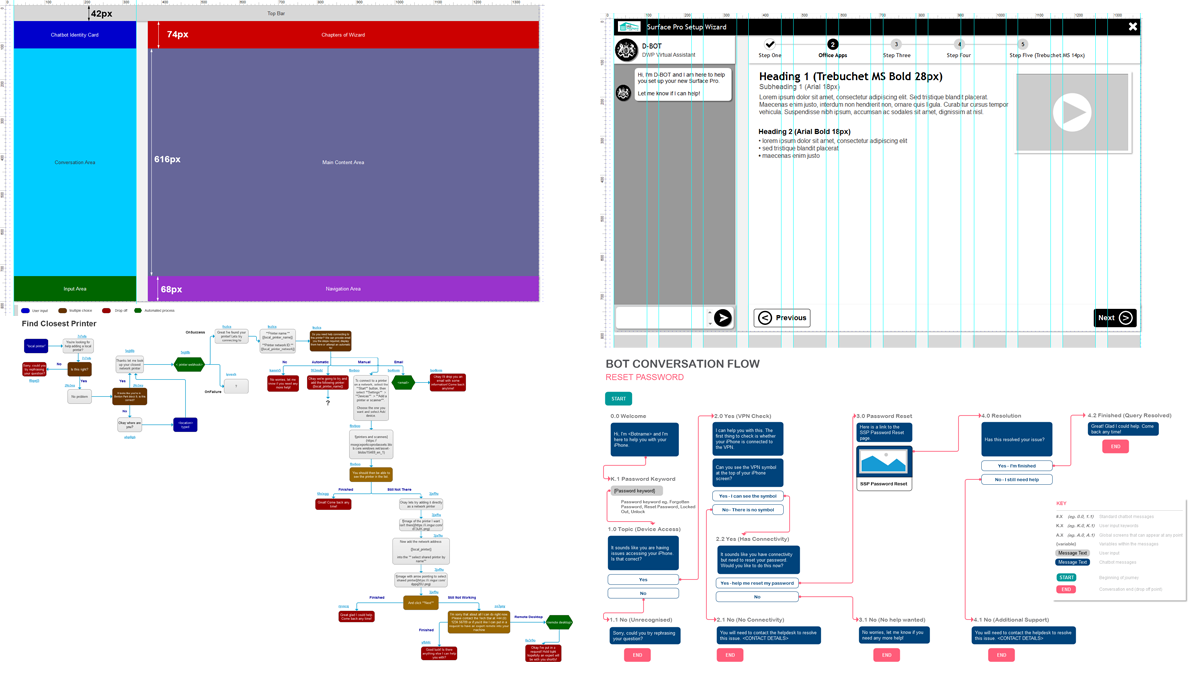
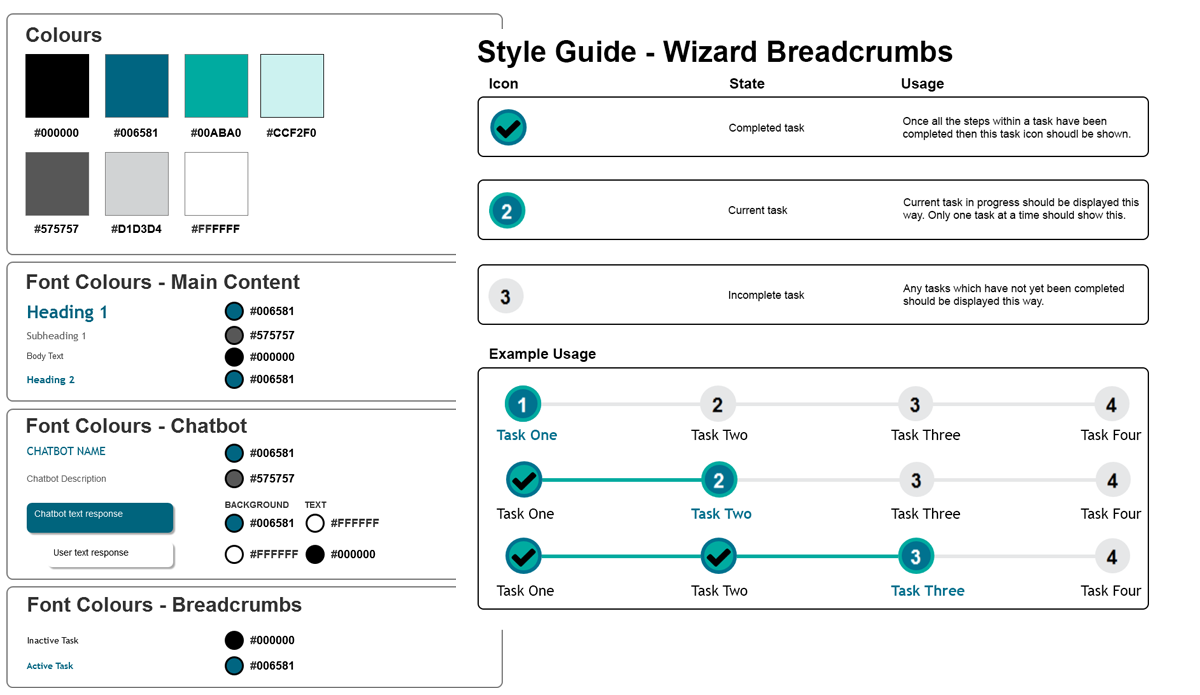
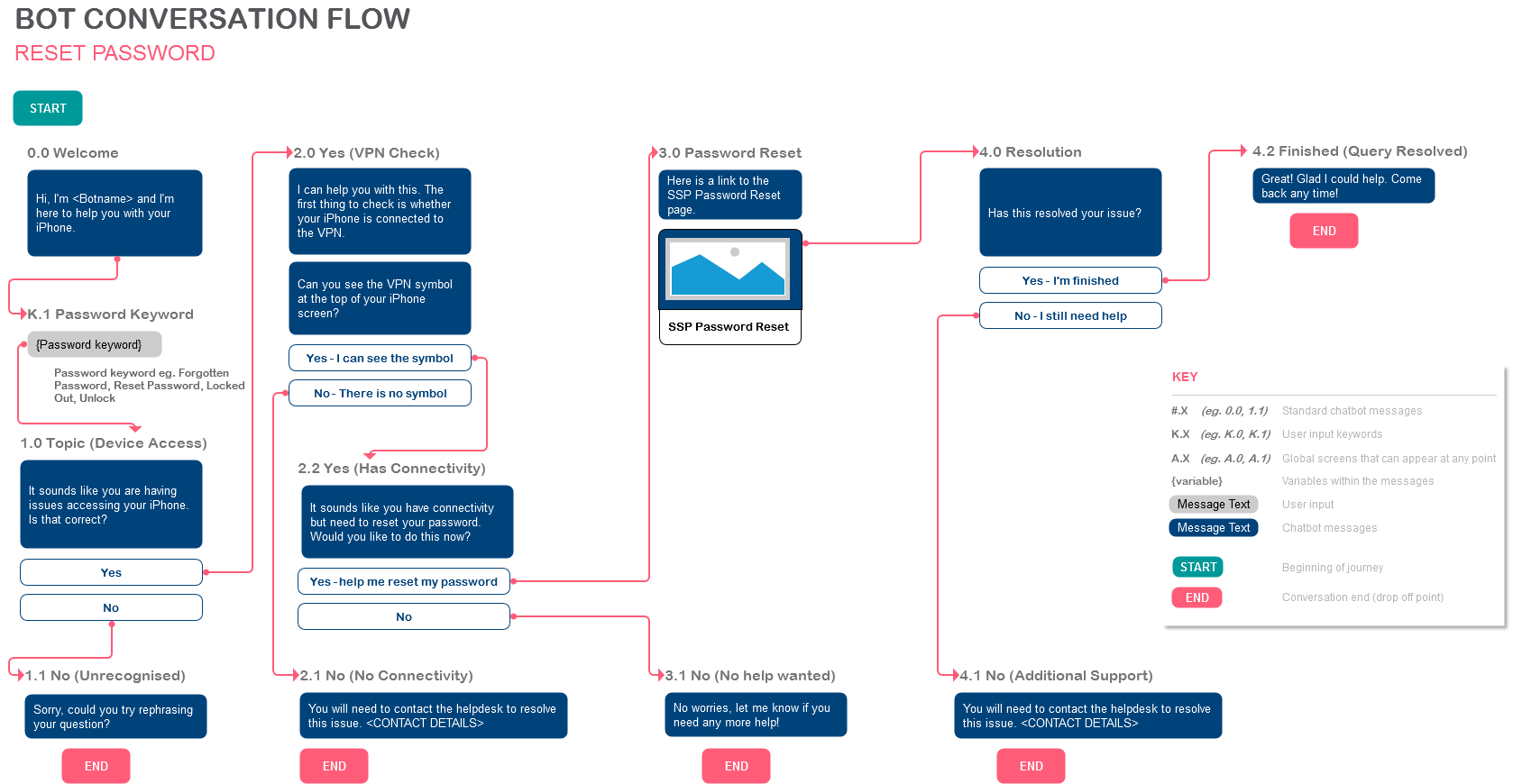
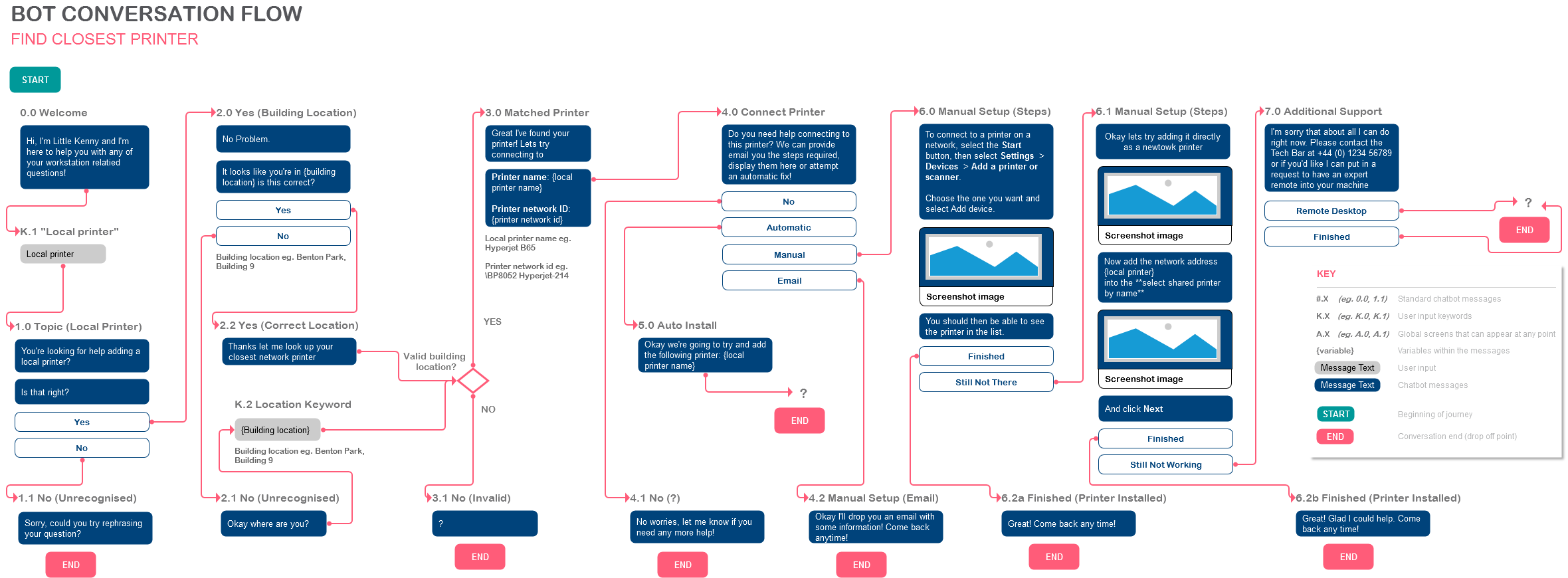

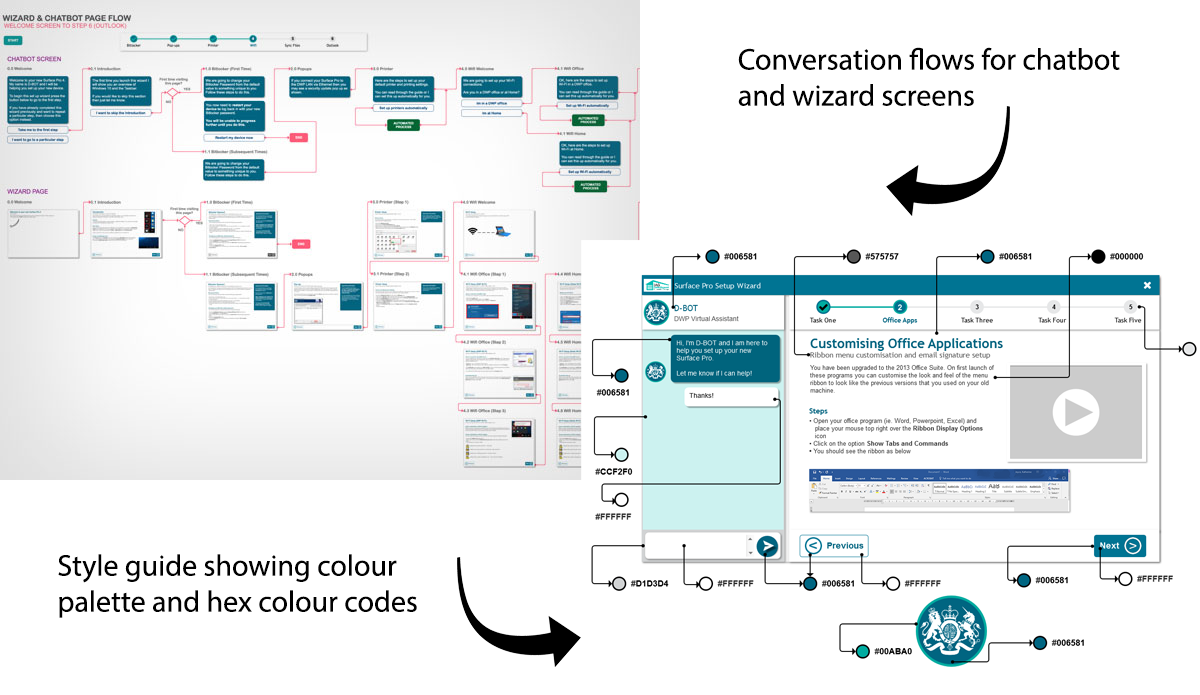
Outcomes
The high fidelity protoype was shared amonst high level stakeholders in order to get buy in to develop this solution into a fully fledged product. The stakeholders agreed to progress the project and add additional resources into implementing a MVP of this concept.